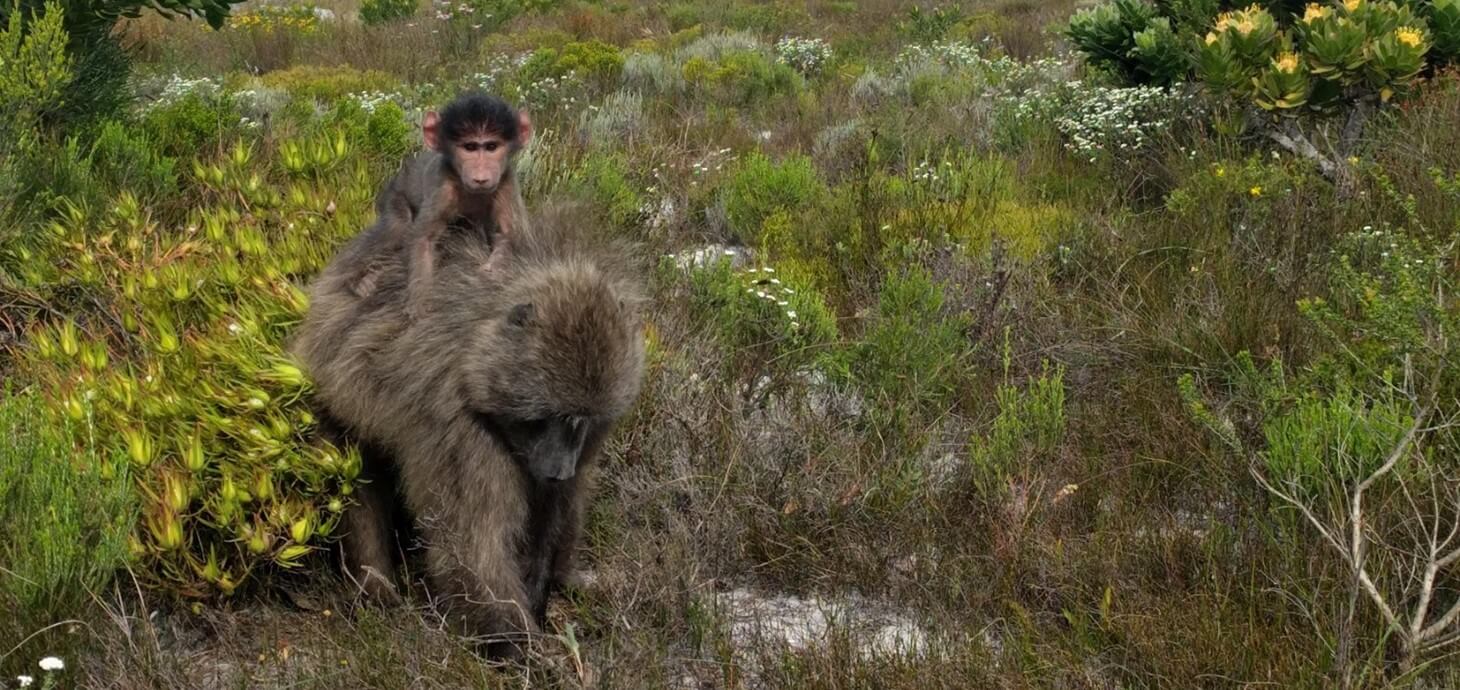
Photo credit: Dr Charlotte Christensen.
A new study from Swansea University and the University of Cape Town provides the first documented evidence of a cessation in urban space use by a female baboon after giving birth: another example of how wild animals are adaptively responding to urbanisation.
The study, recently published in the journal Ecology & Evolution, used GPS collars to track the movements of 13 chacma baboons in Cape Town, South Africa.
The data revealed that when one collared female gave birth, she stopped using urban space without any significant change in daily distance travelled or social interactions that would be expected with general risk-sensitive behaviour during this time.
Whilst only one baboon gave birth while wearing a GPS-recording tracking collar, the field team observed the same pattern of urban avoidance postpartum in two other non-collared females during the study.
The researchers suggest that such changes in the baboon mothers’ behaviour may reduce the risks newborns might experience in the urban environment. It also presents a valuable insight into how species with slow life history strategies, investing in few offspring with extended parental care, need to adapt their behaviour to cope with changes due to human activity within their lifetime.
Lead researcher Dr Anna Bracken, a former Swansea University PhD student now based at the University of Glasgow, commented: "Urban environments may be risky for baboon mothers and their infants, and this study provides further evidence of how baboons living near these areas are adapting in response to the threats they face."
The team's latest research not only provides an insight into how life history events alter individuals' use of anthropogenic environments, but also can be used to advise on methods for managing the baboon's urban space use.
Dr Andrew King, senior author of the study, said: "These findings have implications for how we manage baboon interactions with human environments. By highlighting how long-lived species with slow life history strategies cope with anthropogenic changes, we can help landowners and decision-makers develop plans to minimise conflict and promote coexistence between humans and wildlife on the urban edge."
This research was funded by South Africa’s National Research Foundation and Swansea University.
Read the paper in full: Postpartum cessation of urban space use by a female baboon living at the edge of the City of Cape Town
